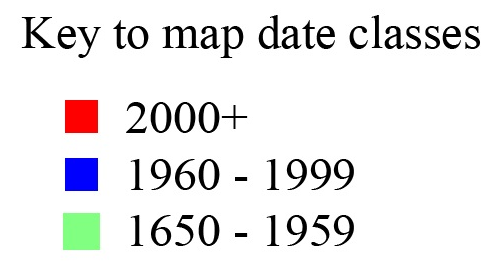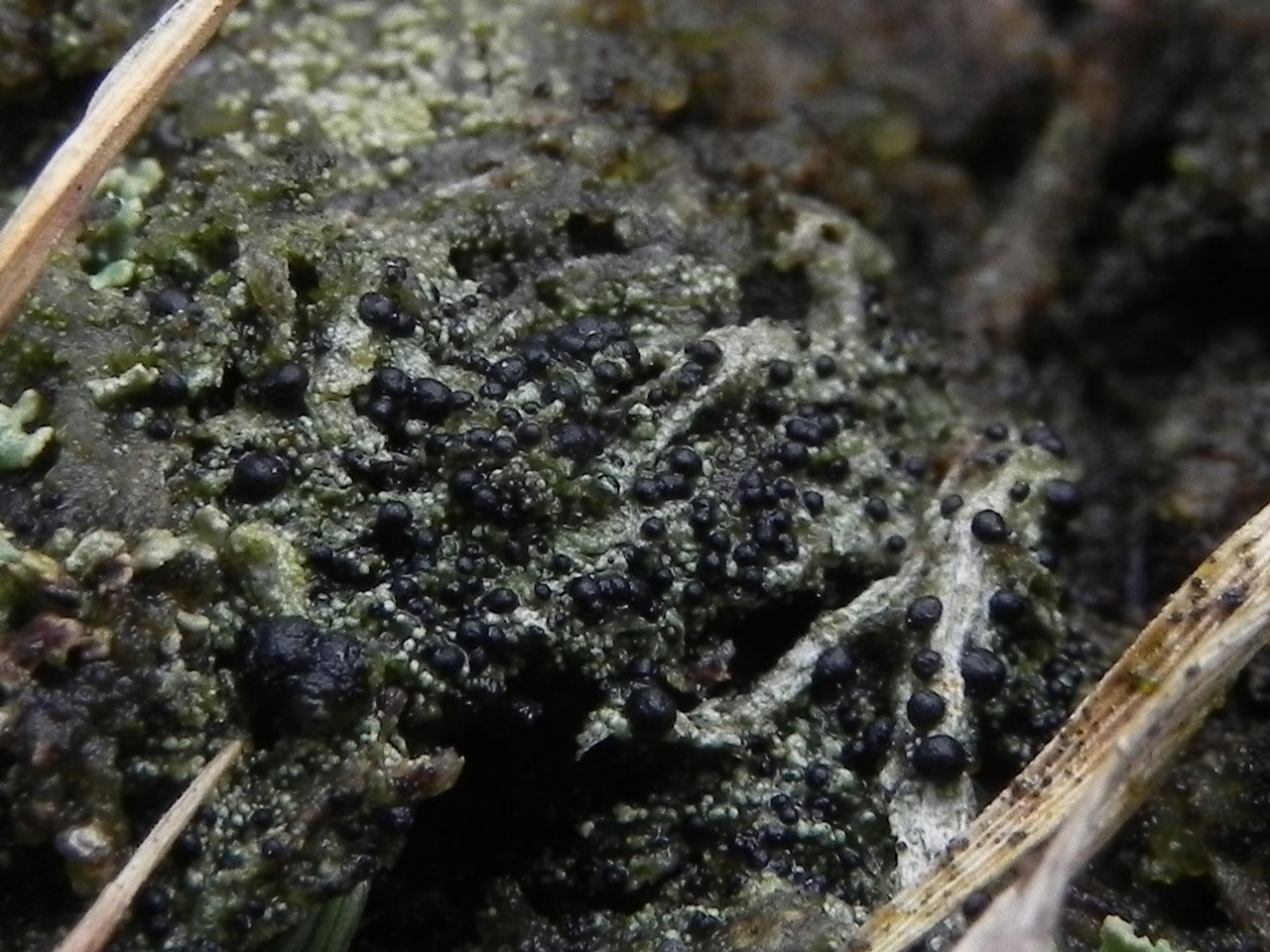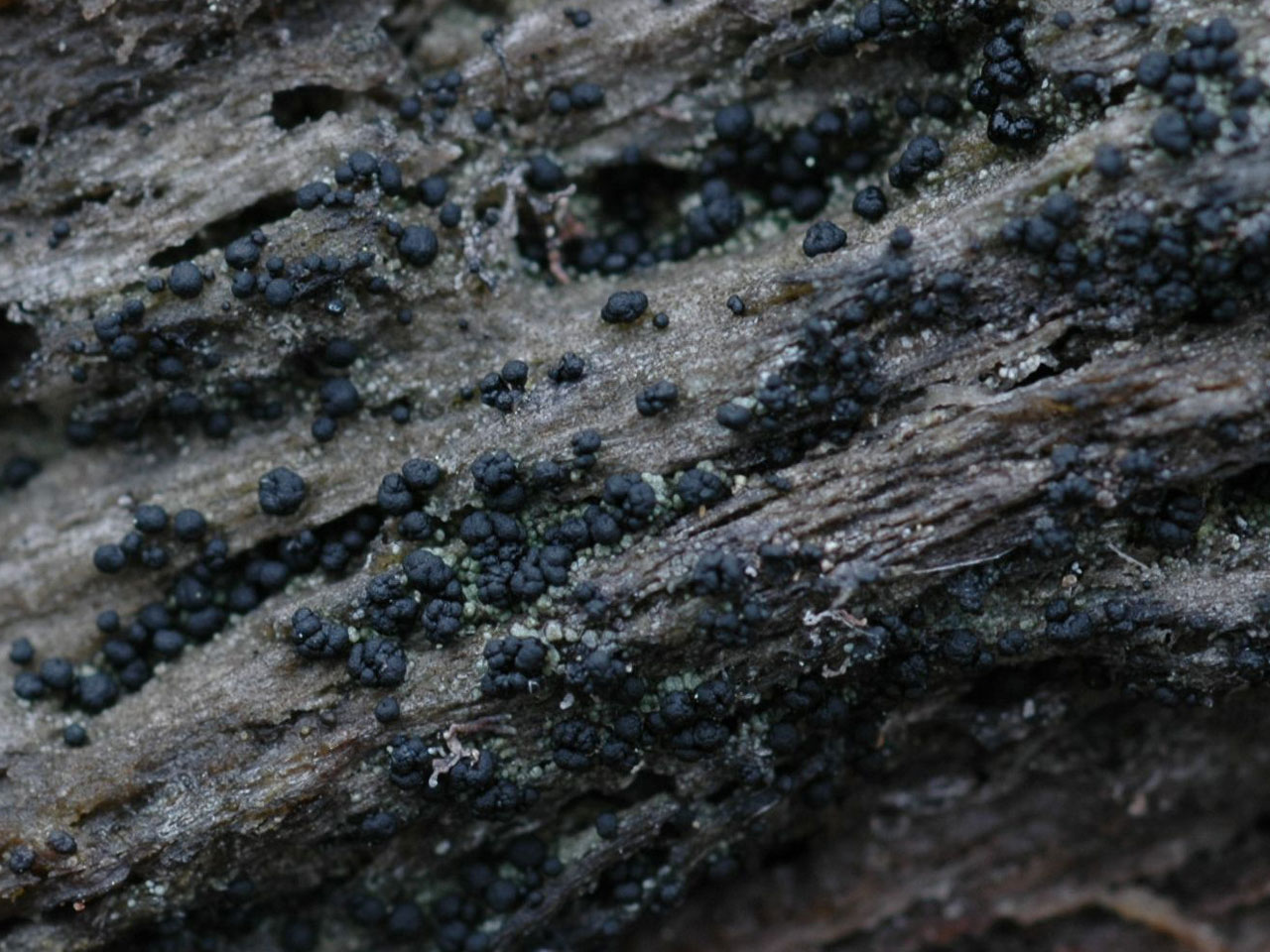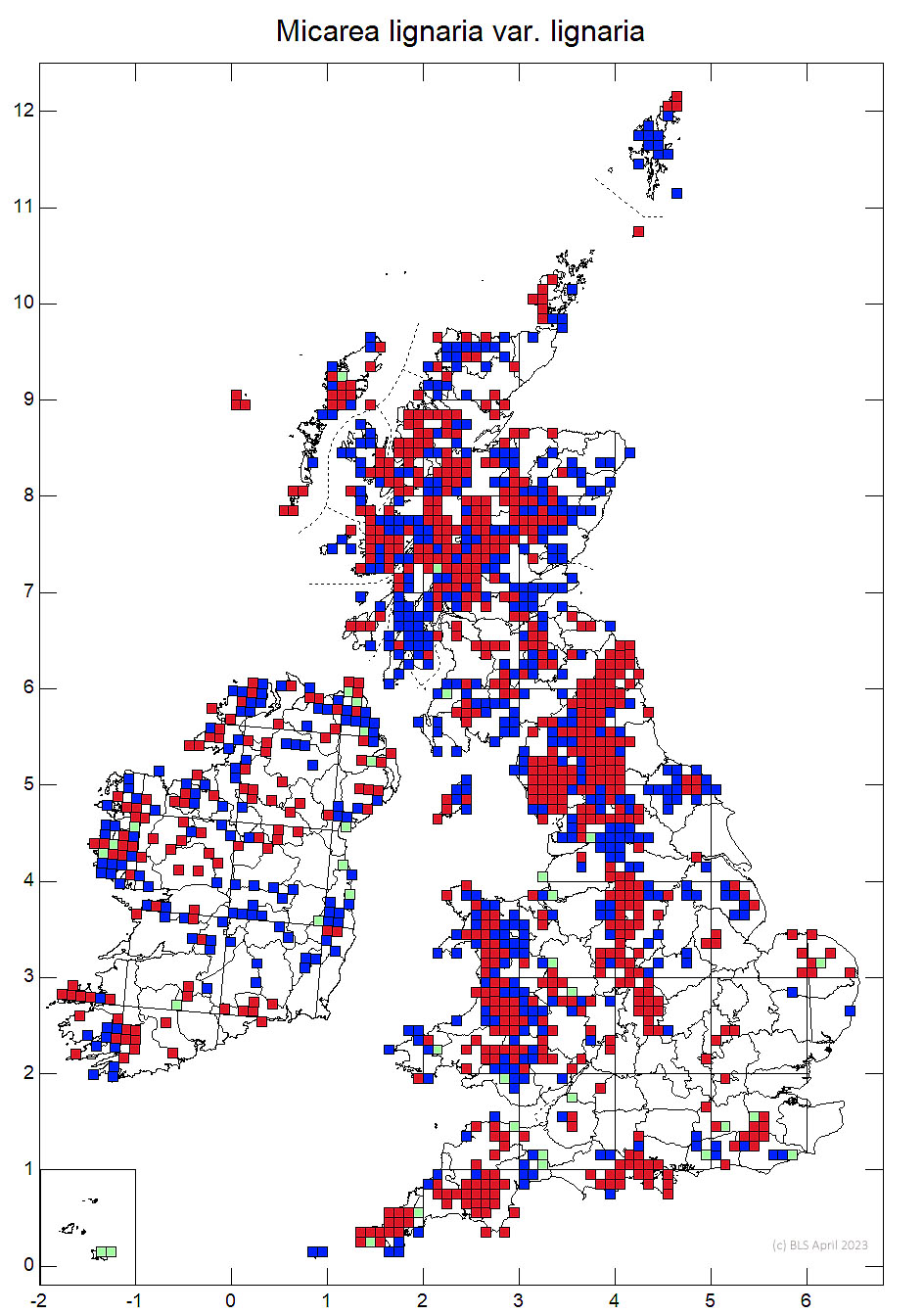A common Micarea of various acidic substrata, often over mosses and plant debris, humus and also found on lignum, in upland districts, more restricted in the lowlands. It has a Pd+ red thallus and all parts are C–, the similar Micarea cinerea and M. peliocarpa differ in having Pd– thalli and C+ red apothecial sections.
Thallus of scattered to confluent ± globose whitish, grey-green or bluish grey glossy or matt areoles 80–300 µm diam., sometimes ± immersed; photobiont cells 4–7 µm diam. Apothecia 0.15–0.6 (–0.9) mm diam., black or blue-black, immarginate, convex to ± globose, rarely with a stalk to 1 mm tall; true exciple ± distinct in young apothecia but soon reflexed, brownish in outer parts; hymenium 50–75 µm tall, colourless, or upper part and sometimes lower part olivaceous to blue-green, K–, rarely with a few scattered, minute violaceous (K+ green) granules; hypothecium pale blue-green or olivaceous, K–, but central part often ± colourless or pale brownish; paraphyses 1.3–1.8 µm diam., numerous, aseptate or sparingly branched above; apices often ± swollen and coated in green or greenish brown pigment. Asci 45–50 × 11–19 µm. Ascospores 16–36 (–38) × 4–6 (–7) µm, (0-) 3- to 7-septate, fusiform, straight or slightly curved. Pycnidia ± immersed; walls green (K–) in upper parts: (a) ca 100 µm diam., with macroconidia 16–22 × ca 1 µm, curved or hamate, 0- to 3-septate; (b) 100–140 µm diam., with mesoconidia 4–7 × 1.5–2 µm, ± cylindrical to obovoid; (c) 40–50 µm diam., with microconidia 5–7 × ca 0.8 µm, narrowly cylindrical; only (c) is common. Thallus C–, K–, KC–, Pd+ red (argopsin), the Pd reaction is not always easy to see; apothecial sections C–.
Micarea cinerea and M. peliocarpa differ in having Pd– thalli and C+ red apothecial sections (gyrophoric acid). Gilbertaria contristans has a Pd–, C– thallus and 1-septate ascospores. Protomicarea limosa has a similar Pd+ red thallus, but aseptate ascospores. Rare morphs of M. lignaria with stalked apothecia resemble Pilophorus strumaticus, which differs in having cephalodia, aseptate ascospores and a Pd± faintly yellowish thallus. Often confused with Bilimbia lobulata and B. sabuletorum, which grow in calcareous or base-rich habitats.
On various acidic substrata, often over mosses and plant debris, humus and also found on lignum, widespread and common, especially in upland districts, more restricted in the lowlands.

Throughout Britain and Ireland but local in the lowlands.
Cannon, P., Orange, A., Aptroot, A., Sanderson, N., Coppins, B. & Simkin, J. (2022). Lecanorales: Pilocarpaceae, including the genera Aquacidia, Byssoloma, Fellhanera, Fellhaneropsis, Leimonis and Micarea. Revisions of British and Irish Lichens 27: 1-48.
Text by Neil A Sanderson based on Canon et al (2022).


